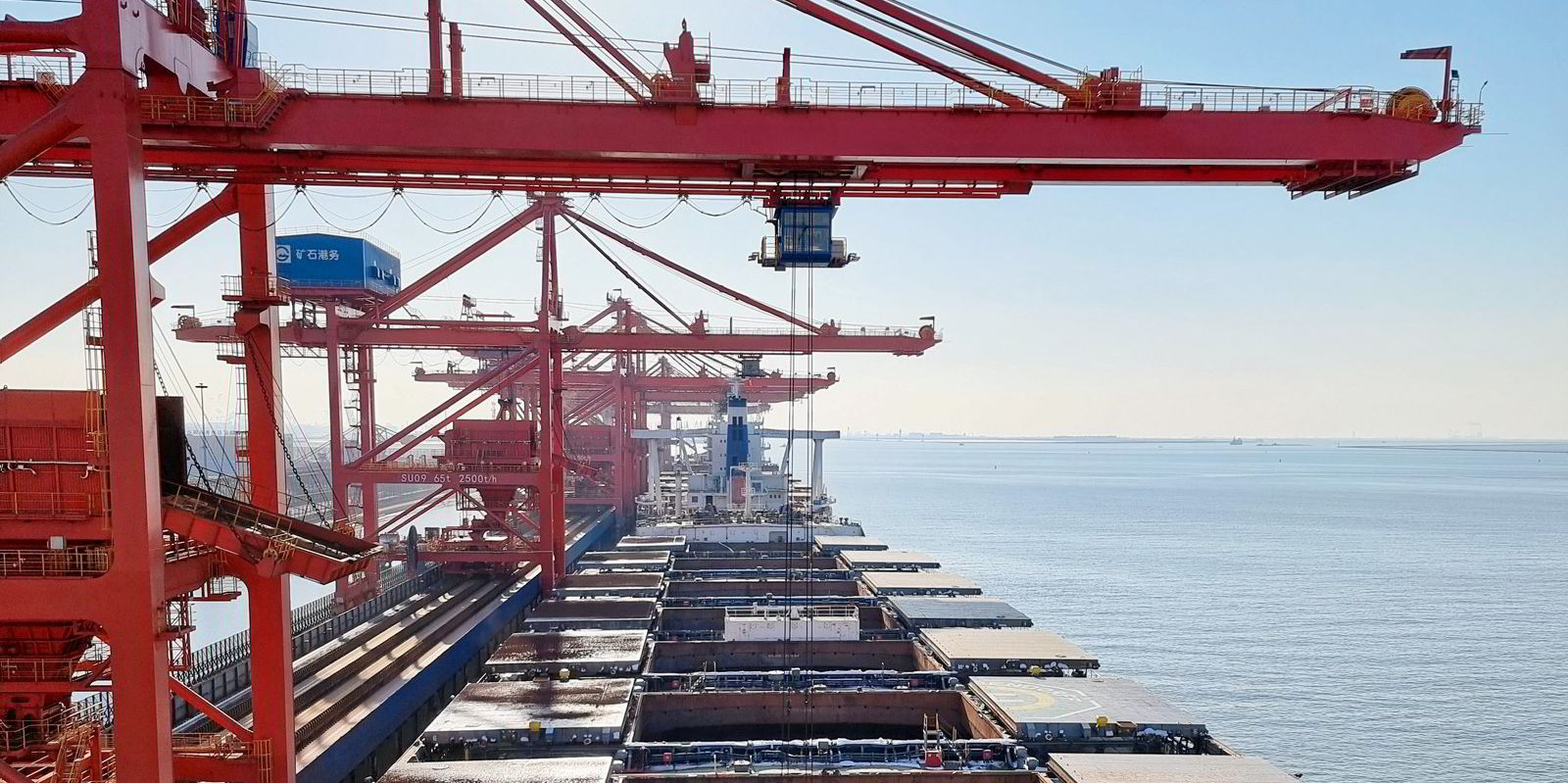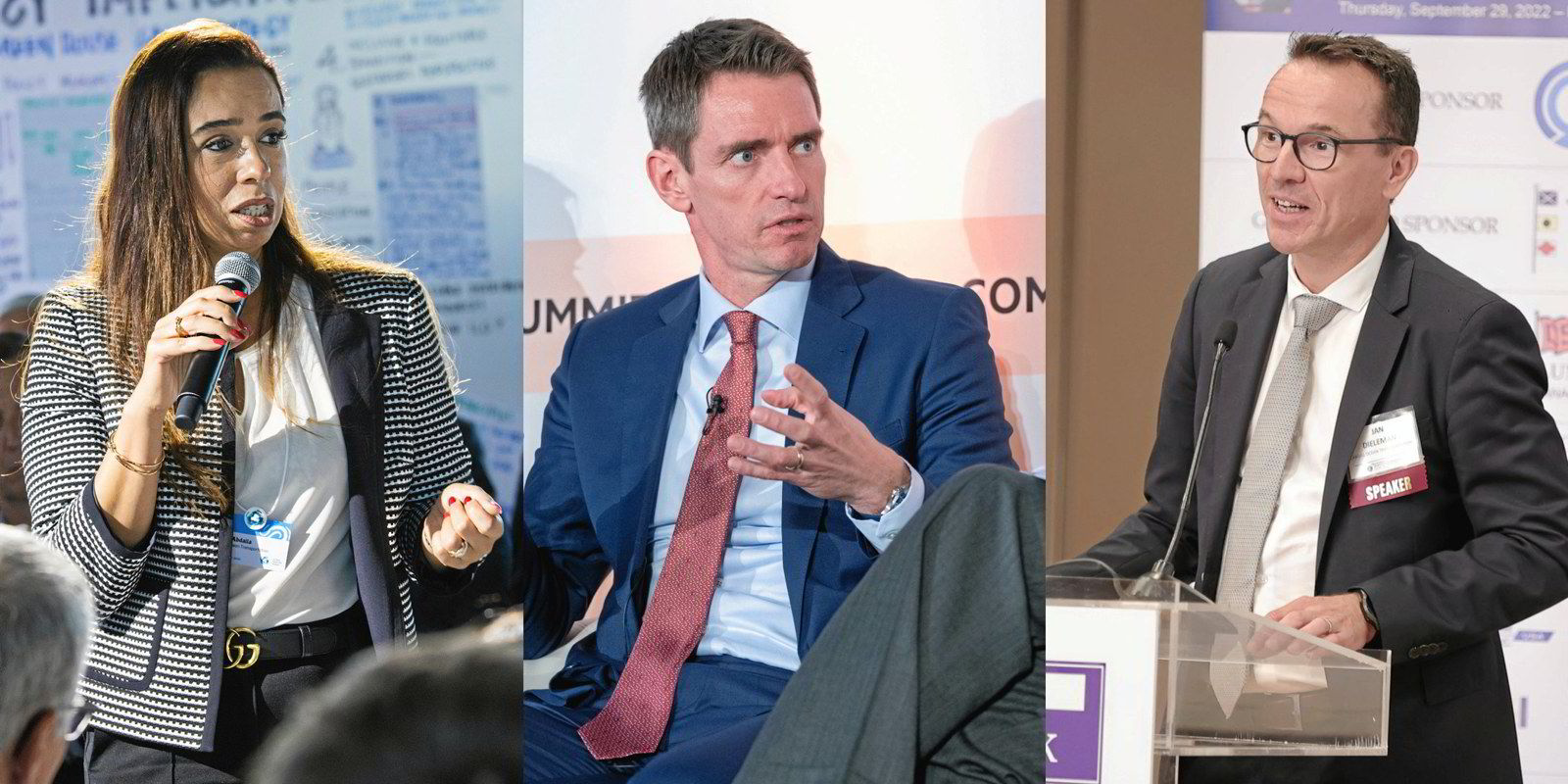Let us assume for a minute that safety and technical hurdles are not an issue when it comes to using ammonia as a fuel for shipping. (Don’t worry, we’ll get back to safety, because that is not to say that it is not essential to the discussion.)
Assuming these challenges will be overcome, ammonia may provide a zero-carbon pathway for shipping, but one that may not work in every circumstance in a future that involves a variety of fuels.
Just ask the woman who does not a want to be called “the ammonia lady”.
After a LinkedIn post in which Global Centre for Maritime Decarbonisation chief executive Lynn Loo said she was given that moniker twice in a week, ACUA Ocean chief operating officer Mike Tinmouth said in a comment that he believes ammonia will be applicable in a fuel in only 20% of marine situations.
“I agree it will be use-case specific and we are headed from an already heterogeneous fuel mix … to an even more heterogeneous fuel mix,” Loo responded, pointing to today’s mix including low-sulphur fuel oil, marine gasoil and LNG.
TradeWinds reported this week that a feasibility study by a Global Maritime Forum-backed consortium found that, if safety and technical hurdles are overcome, one situation where ammonia may play a role is the iron ore trade from Western Australia to China and Japan.
The West Australia-East Asia Iron Ore Green Corridor Consortium is made up of four of the major players on that benchmark trade: miners BHP and Rio Tinto, bulker operator Oldendorff Carriers and shipowner Star Bulk Carriers.
The report, which follows a pre-feasibility study that identified ammonia as a candidate for the proposed green corridor, found that it could be possible to get large bulkers on the water that can use fuel by 2028.
360 ships by 2050
Scaling that up to 23 vessels powered by green ammonia in 2030, 91 in 2035 and 360 in 2050 to achieve full decarbonisation could be feasible, if the right economic conditions are in place and shipyard slots are available. Enough ships are slated for retirement that there will be limited need for retrofits or early scrapping, the consortium said.
Where will those ships get green ammonia? After all, the ammonia widely available today has no carbon in it but has greenhouse gas emissions in its supply chain, so these vessels would need a cleaner version of the fuel made from green hydrogen to achieve full decarbonisation.

Australia has much of the answer.
The iron ore export hub of Pilbara alone is poised to have 9m tonnes of green ammonia available by the 2030s, out of 52m tonnes across the country. Imported ammonia from the US, Chile and the Middle East could add to the mix, the initiative found.
There should be enough
“Enough clean ammonia will likely be available to meet the corridor’s near and long-term requirements, even when accounting for demand from other sectors and uncertainties,” the consortium said in the feasibility report.
Singapore and Pilbara could both serve as bunkering hubs, the study found.

But the safety question remains a key hurdle, given ammonia’s toxic properties.
Scott Bergeron, managing director for global engagement and sustainability at Oldendorff, and Star Bulk chief strategy officer Charis Plakantonaki both mentioned the need to tackle safety challenges even though those topics were deliberately outside the scope of the report.
Technical advances
As the Green Seas podcast has reported, engine manufacturers and classification societies are optimistic that the hurdles will be overcome, with the first ammonia-fuelled ships expected in 2026.
But asked whether he shared that sentiment, Bergeron said it is not a question of optimism but rather a call to action to address the issues.
“We were passionate about the safety of our crew, and the personnel at the terminals where our ships operate,” he told Green Seas. “We’re not willing to wish or assume the significant safety concerns of ammonia away.”
Plakantonaki said that for New York-listed Star Bulk to feel comfortable enough to order an ammonia-fuelled vessel, safety is the first consideration.
“Standards on the handling and storage of ammonia as marine fuel, as well as emergency response and training protocols, are yet to be developed,” she said.
“Then, we need to see the ammonia engine coming into the market, and the ammonia-powered ship designs being approved. Infrastructure investments also need to be made for the fuel to become available at scale.”
Finally, long-term charters are necessary to help cover the higher cost of ammonia-fuelled vessels, she told Green Seas.
The Global Centre for Maritime Decarbonisation’s Loo said in her LinkedIn post that, despite the work by her organisation on ammonia, it is not an advocate for the fuel but is working to fill the gap that exists about safely using it in shipping.
Safety required
“We see engines being developed, ship designs being approved, tugboats being retrofitted etc,” she said in a post replete with emojis (which I hopefully render properly on whatever platform you are reading this newsletter).
“But these efforts won’t see the light💡of day unless we figure out how to safely move and transfer the molecule as a fuel. 🚢”
Among the questions the centre is looking to answer are:
- Under what circumstance can ammonia be transferred in crowded ports?
- What training is needed for crew to carry out ammonia fuelling operations?
- What emergency response procedures are needed if there is a leak?
She said the goal is to speed along shipping’s energy transition to push the emissions curve downward. And she wants a different nickname.
Loo wrote: “As opposed to the ammonia lady, call me the lady in a hurry.🏃🏻♀️🏃🏻♀️🏃🏻♀️”
______________
Podcast: Why Australia is making such a stink about stink bugs on ships
In general, things are going well for operators of vehicle carriers. The ships that carry cars and trucks from their manufacturers to their markets have been commanding record freight rates.
Even though economic clouds have softened the automobile market, vessel capacity remains tight, with few orders at shipyards threatening to bring new car carriers into the market.
But since the start of this year, there has been one major problem: congestion at ports in Australia caused in part by efforts to prevent a pest with an unpleasant sounding name from entering the country.
Next week’s episode will explore the environmental dangers of sanctions-busting oil transfers. Subscribe to the podcast on Google Podcasts, Apple Podcasts, Stitcher, Pandora, Spotify or SoundCloud to get it on your mobile device.
______________
BP executive says shipping hydrogen will not make economic sense until ‘technology advances’
It does not make economic sense to ship clean hydrogen from country to country, and the industry should initially focus on replacing existing uses of grey versions of the commodity, according to BP’s senior vice president for hydrogen and carbon capture and storage.
Felipe Arbelaez said clean hydrogen “has a vital role to play in cutting emissions, especially in sectors like cement, steelmaking and chemicals… and for heavy transport — trucks, ships and aircraft”, according to Hydrogen Insight.
He then discussed three “lessons” he had learned in his role at BP.
“The first thing I’ve learned is that our collective efforts should be initially focused on going after industrial use of hydrogen,” Arbelaez said.
______________
Methanol first-mover Maersk to splash $1.4bn on neo-panamax container ships
AP Moller-Maersk’s plummeting profit is not stopping the company investing in new ships.
It is poised to order a series of methanol-fuelled neo-panamax newbuildings that will cost at least $1.38bn.
Shipbuilding players said Maersk has signed a letter of intent with China’s Yangzijiang Shipbuilding for eight firm 8,000-teu container ships, with four options.
Read more
- Editor’s Selection: Clarksons’ pay problem, passing the buck on Pablo and Japan mourns titan’s death
- Podcast: Why Australia is making such a stink about stink bugs on ships
- Trafigura’s Rasmus Bach Nielsen takes helm of Sea Cargo Charter to ‘push green transition forward’
- Wilson Sons cuts greenhouse gas emissions as gender balance improves
- Green Seas: How companies are tackling an ocean-size gap in data about the sea




